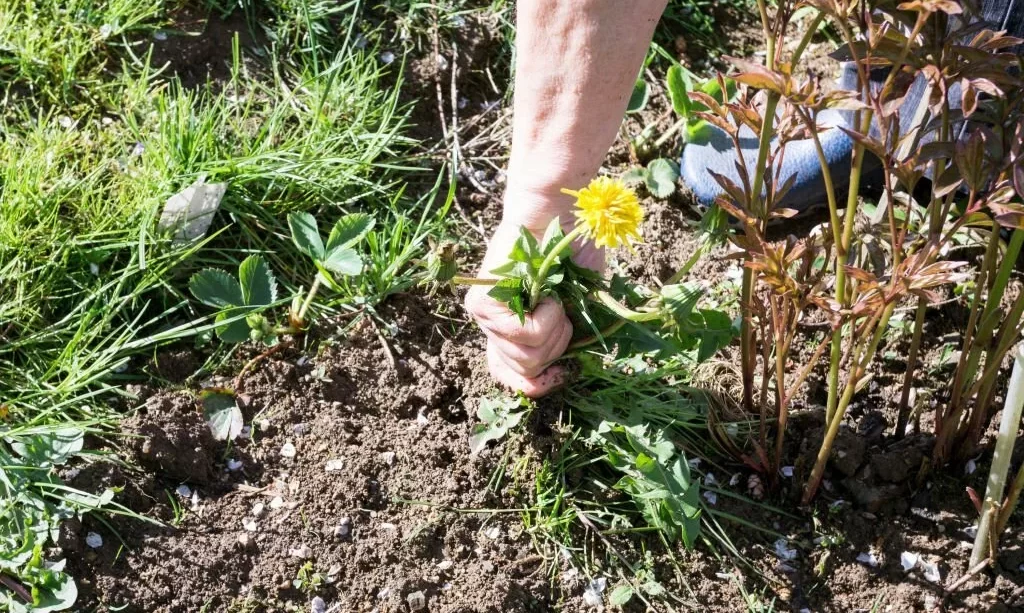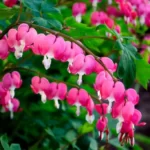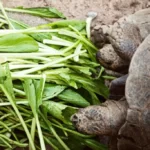Weeds, those uninvited and persistent plants, have a remarkable ability to flourish in gardens, lawns, and agricultural fields, often vexing gardeners and farmers alike. Despite our best efforts to control them, these unwanted guests seem to appear out of nowhere and thrive. In this exploration, we delve into the fascinating world of weed growth, seeking to unravel the mechanisms that enable these resilient plants to sprout, spread, and persist. Understanding how weeds grow is not only a quest for knowledge but a critical component of effective weed management in a variety of environments, from our backyard gardens to vast agricultural landscapes.
- Apply this product only in EARLY SPRING and FALL
- Barricade professional-grade pre-emergent weed control is designed to prevent weeds, and will not aid in eliminating existing weeds.
- Contains 0.48% of the active ingredient prodiamine – Labeled to prevent over 30 grass and broadleaf weeds
- Trusted by top turf care professionals to prevent problem weeds without harming desirable plants
- DG Pro formulation allows for more particles per square inch of chemical – leads to better control of weeds
Weeds: The Uninvited Guests
Weed species, often defined as plants growing where they are not wanted, are a ubiquitous presence in diverse ecosystems. They may include familiar intruders like dandelions and crabgrass, as well as a multitude of other species. Weeds are notorious for their disruptive impact, competing with desirable plants for resources such as light, water, and nutrients. Their presence can hinder the growth of cultivated crops, diminish the aesthetic appeal of gardens, and even alter the composition of natural ecosystems. Recognizing the significance of understanding weed growth mechanisms is the first step toward effectively managing these uninvited guests.
Germination: The Beginning of a Weed’s Life
The journey of a weed’s life commences with a critical process: germination. This is the moment when a weed seed, often dormant in the soil, awakens and begins to sprout. The germination process is influenced by a variety of factors, including temperature, moisture, and light. For many weed species, the right conditions must align to trigger this vital stage in their life cycle. Understanding the intricacies of germination is essential for those seeking to prevent the emergence of weeds, as it is at this stage that timely interventions can be most effective. Delving into the conditions that encourage weed seeds to burst into life provides valuable insights into the biology of these uninvited plants.
Growth Stages of Weeds
Weeds, like all plants, go through distinct growth stages, and understanding these phases is key to comprehending their life cycle. The growth stages of weeds typically include seedling, vegetative growth, flowering, and maturity. In the seedling stage, the young weed emerges from the soil, often sporting a pair of cotyledon leaves. As it progresses into the vegetative growth phase, the plant focuses on establishing a strong root system and leafy structure. This is when weeds are most vulnerable to control measures, and early intervention can be particularly effective.
Once weeds enter the flowering stage, they produce flowers, enabling them to reproduce. The flowers develop into seeds, which, when mature, can be dispersed to propagate new weed plants. The final stage is maturity, where the weed plant has fully developed and continues to produce seeds, contributing to the persistent cycle of weed growth. Recognizing the different growth stages of weeds aids in determining the most opportune times for weed management and control.
Reproduction and Spread
Weeds employ various strategies for reproduction and spreading their influence. These strategies often encompass both sexual and asexual reproduction methods. Sexual reproduction involves the production of seeds through the fertilization of flowers, and it is a common approach for many weed species. Seeds can be dispersed by wind, animals, or human activity, allowing weeds to colonize new areas.
In addition to sexual reproduction, weeds are adept at asexual reproduction. Some weeds produce underground structures like rhizomes and stolons, allowing them to spread horizontally, giving rise to new plants. These vegetative propagation methods are a testament to the adaptability and resilience of weeds.
Weed seeds and reproductive structures are equipped with a range of adaptations that aid in their dispersal, ensuring that they can exploit various opportunities for growth. Understanding the reproductive strategies and spread mechanisms of weeds is essential for effective weed management, as it provides insight into the key stages of the weed life cycle where interventions can be most successful.
Adaptations for Survival
Weeds exhibit a remarkable array of adaptations that enable their survival and proliferation in diverse environments. These adaptations are a testament to their tenacity and resilience. Some common adaptations include:
- Deep Roots: Weeds often develop deep root systems, allowing them to access water and nutrients from lower soil layers, especially during drought conditions.
- Drought Tolerance: Many weed species can endure extended periods of drought, conserving water and thriving in arid environments.
- Resistance to Herbicides: Weeds can develop resistance to herbicides, making chemical control measures less effective over time.
- Rapid Growth: Weeds are known for their fast growth, which allows them to outcompete desirable plants and take advantage of available resources.
- Allelopathy: Certain weeds release chemicals that inhibit the growth of neighboring plants, further enhancing their competitive edge.
These adaptations are the result of millions of years of evolution, enabling weeds to persist and often outcompete cultivated or native plants in various settings.
Weed Management and Control
Effectively managing and controlling weeds is a critical aspect of maintaining healthy gardens, landscapes, and agricultural fields. Several approaches can be employed for weed management:
- Cultural Methods: Practices such as proper spacing of plants, mulching, and crop rotation can help reduce weed competition.
- Mechanical Methods: Techniques like hand weeding, mowing, and tilling can physically remove weeds.
- Chemical Control: The use of herbicides can be effective, but it requires responsible and targeted application to avoid harming desirable plants and the environment.
- Biological Control: Introducing natural predators or competitors of specific weed species can help keep their populations in check.
- Prevention: Preventing weed seeds from entering the environment and spreading is often the most cost-effective strategy. This includes using certified weed-free seeds and implementing good hygiene practices.
Conclusion
Understanding how weeds grow, their life cycle stages, reproductive strategies, and survival adaptations provides the foundation for effective weed management. Weeds, as uninvited guests, can disrupt ecosystems and cultivated landscapes, but with informed practices and a combination of control methods, their impact can be minimized. Weed management isn’t just about control but also about responsible coexistence with these resilient plants. By applying the knowledge gained from this exploration, we can foster healthier and more harmonious environments where both desired and unwanted plants find their respective places in the natural world.





